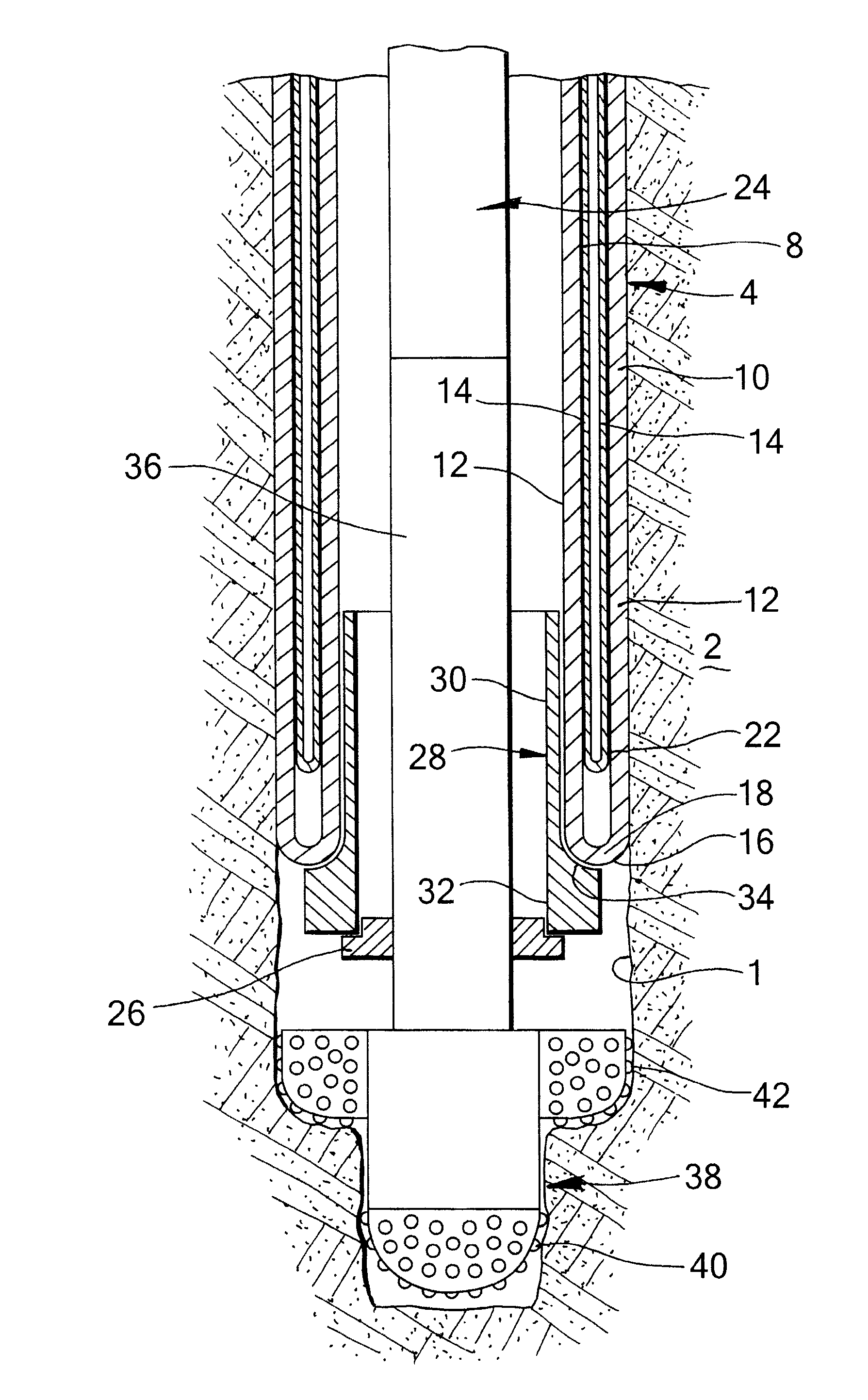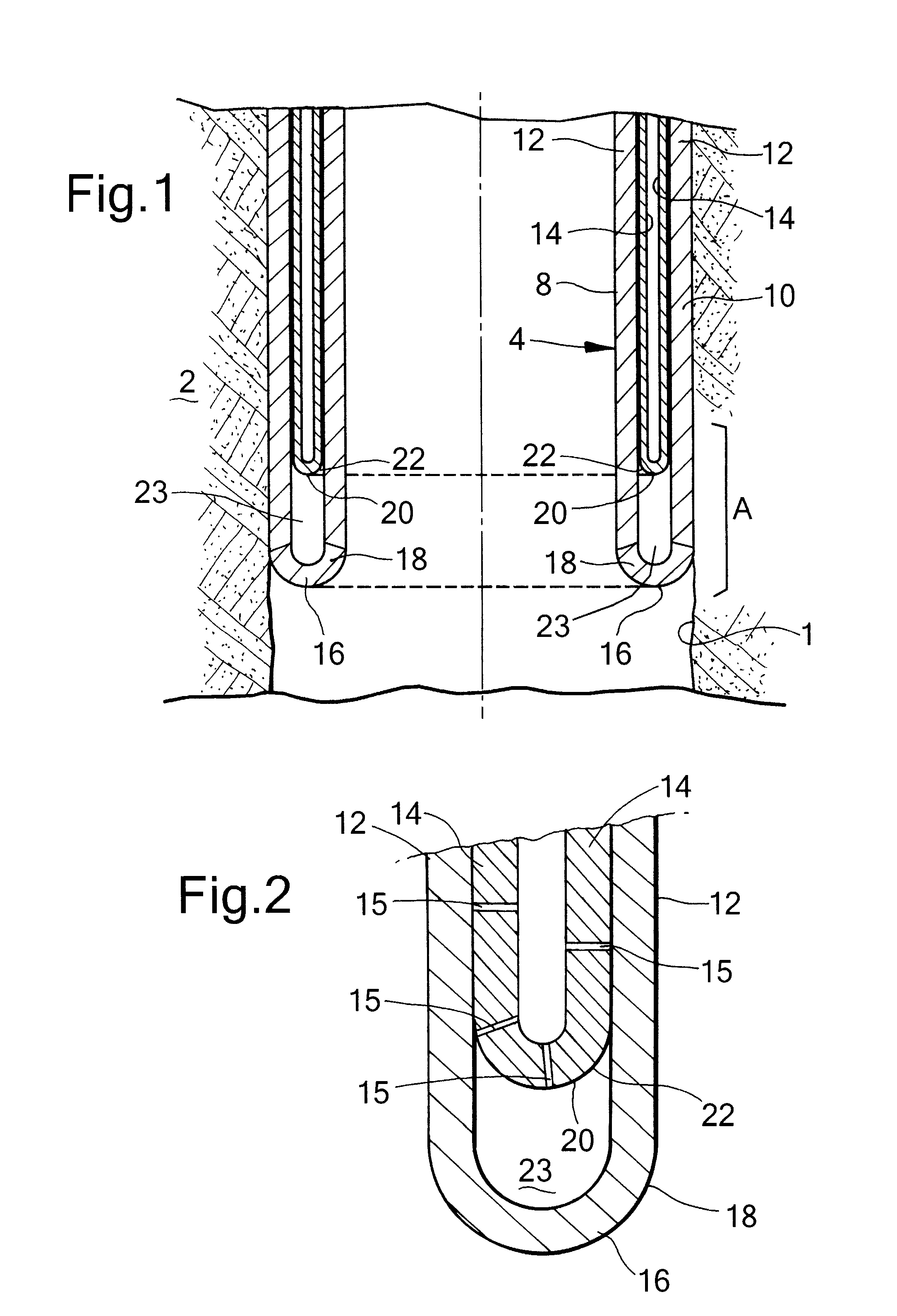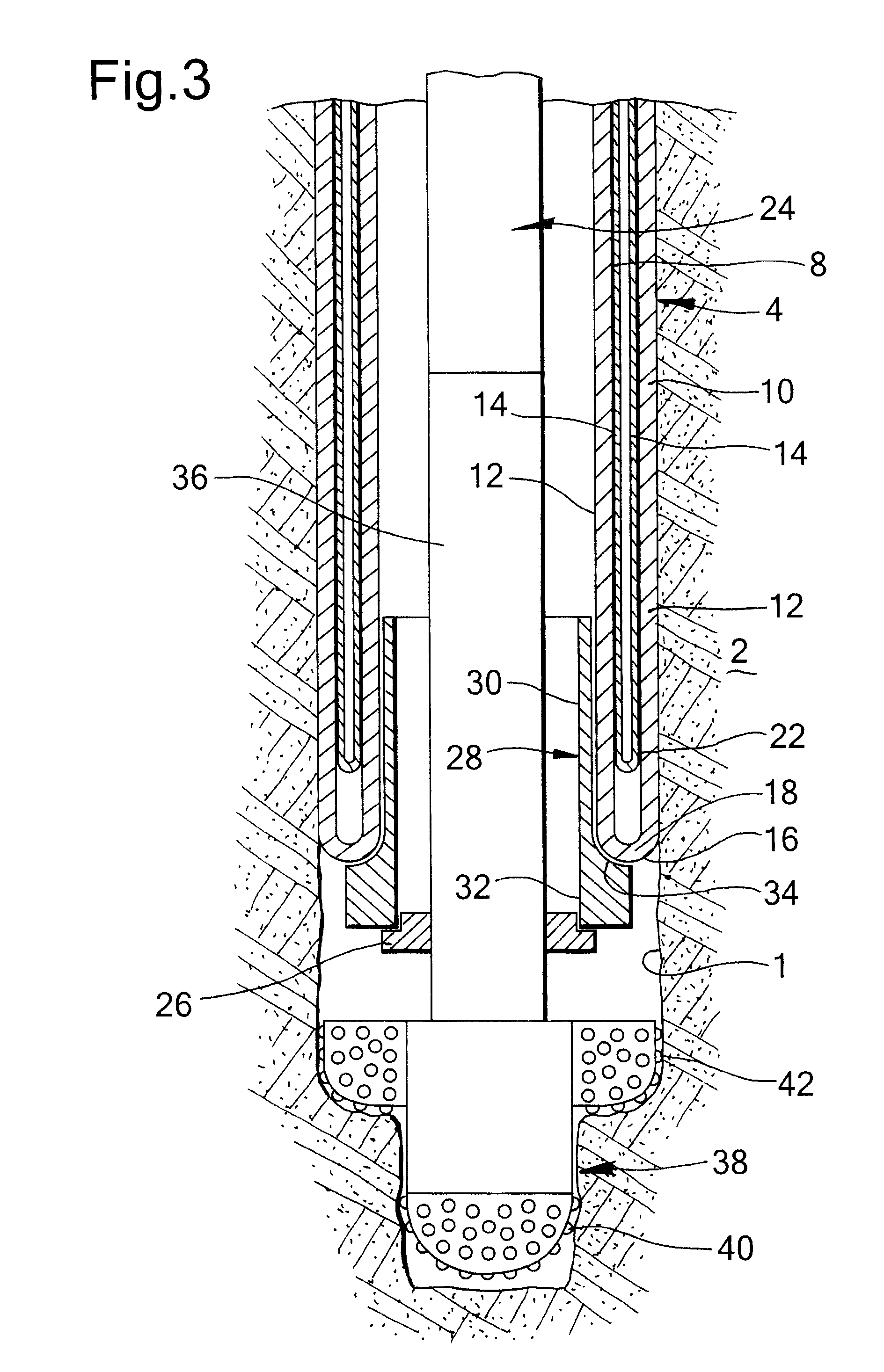Method of radially expanding a tubular element
a tubular element and radial expansion technology, applied in the direction of prosthesis, blood vessels, borehole/well accessories, etc., can solve the problems of high friction force that needs to be overcome, the expansioner becomes stuck in the tubular element, and the cross-sectional wellbore size available for oil and gas production, etc., to reduce the tendency of buckling
- Summary
- Abstract
- Description
- Claims
- Application Information
AI Technical Summary
Benefits of technology
Problems solved by technology
Method used
Image
Examples
Embodiment Construction
[0027]Referring to FIGS. 1 and 2 there is shown a system comprising a wellbore 1 extending into an earth formation 2, and a tubular element in the form of liner 4 extending downwardly into the wellbore 1. The liner 4 has been partially radially expanded by eversion of the wall of the liner whereby a radially expanded tubular section 10 of the liner 4 has been formed. A remaining tubular section 8 of the liner 4 extends concentrically within the expanded tubular section 10. The wall of the liner 4 includes a first layer 12 and a second layer 14, both of steel, whereby the second layer 14 extends around the first layer 12 at the remaining liner section 8. Thus, as a result of the eversion process, the second layer 14 extends inside the first layer 12 at the expanded liner section 10.
[0028]The first and second layers 12, 14 are separable from each other. The layers 12, 14 can be held together, for example, by a suitable pre-stress in circumferential direction. That is to say, at the re...
PUM
 Login to View More
Login to View More Abstract
Description
Claims
Application Information
 Login to View More
Login to View More - R&D
- Intellectual Property
- Life Sciences
- Materials
- Tech Scout
- Unparalleled Data Quality
- Higher Quality Content
- 60% Fewer Hallucinations
Browse by: Latest US Patents, China's latest patents, Technical Efficacy Thesaurus, Application Domain, Technology Topic, Popular Technical Reports.
© 2025 PatSnap. All rights reserved.Legal|Privacy policy|Modern Slavery Act Transparency Statement|Sitemap|About US| Contact US: help@patsnap.com



